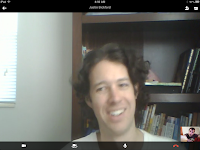This was a very quick meeting. A friend of the group asked for the Treynor Measure for our portfolio. Unable to answer, we took an action item to figure it out.
In the above article, we found a formula to calculate this method of portfolio measurement.
| (Portfolio Return – Risk-Free Rate) / Beta |
T(Market) = (.227-.008)/1 = .219
T(Portfolio) = (.072-.008)/.65=.0984
The returns/beta were pulled from our SigFig account. "The Risk-Free Rate" is a 6-month Treasury return. The article mentions that the treasuries are a good proxy for this return. The 6-month version was the closest to a year-to-date. Originally, the 10-Year was used and it yielded a result where the T(Market) was three times higher than our portfolio. Changing the time-horizon on the treasuries bumped the difference down to a little over two. The "Risk-Free Rate" has a bit more of an impact than we originally would have thought.
The conclusion that we should draw from the rest of the article is that we aren't necessarily doing as bad as the percent returns might indicate. Even though, on a percentage basis, we are comparing a 22% return to a 7.2% return, the reduced risk of our portfolio boosts how we are doing. In real dollars and with the current marked conditions we are under performing the S&P. If the conditions were different, then that lower risk might do us some good.
Again, the S&P 500 may not be the best benchmark to use against an internationally diversified portfolio. Until we find something better we will continue to use it.
The US is a growth center in terms of stock values currently. With the large amount of international stocks that we hold right now we should expect to not be doing as well as the US.
Next Week: Slowly moving towards a buy. Maybe a US buy. Maybe we missed the boat.


No comments:
Post a Comment